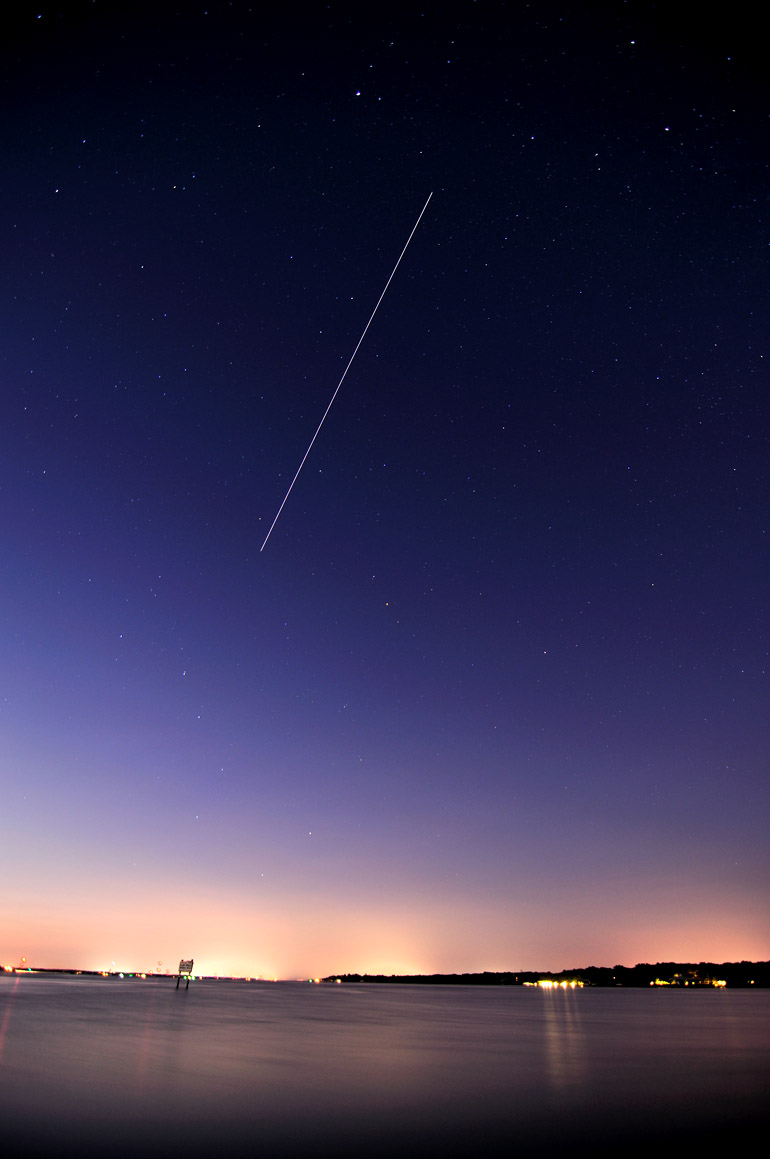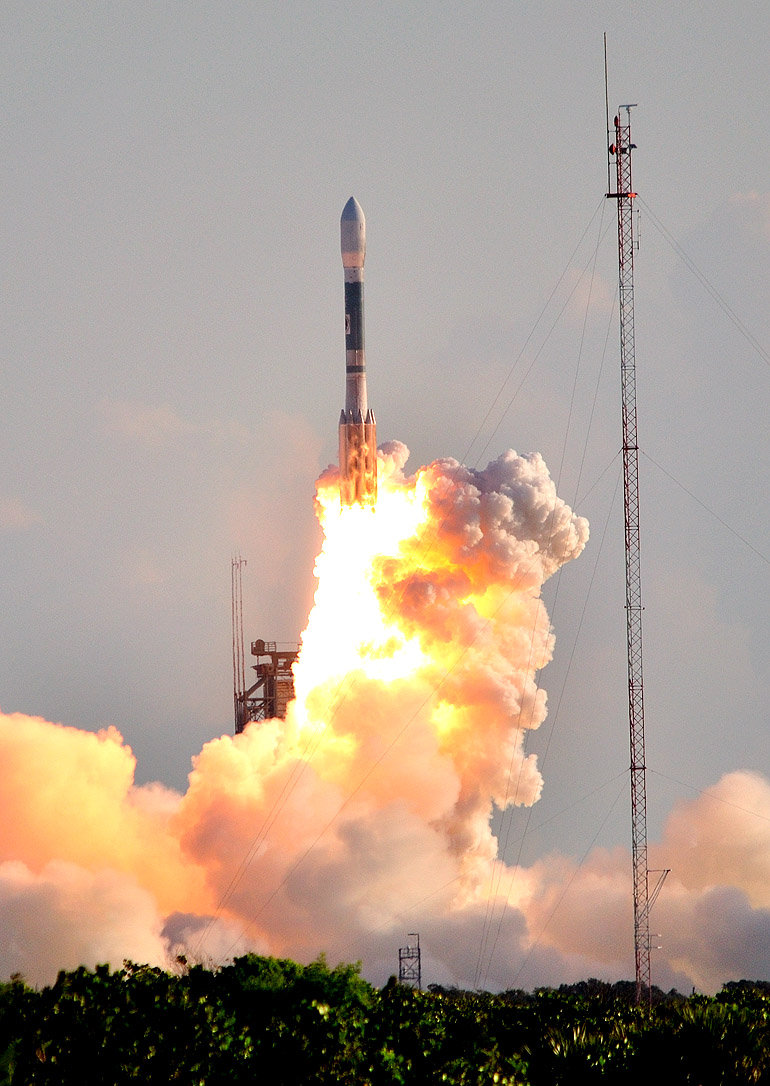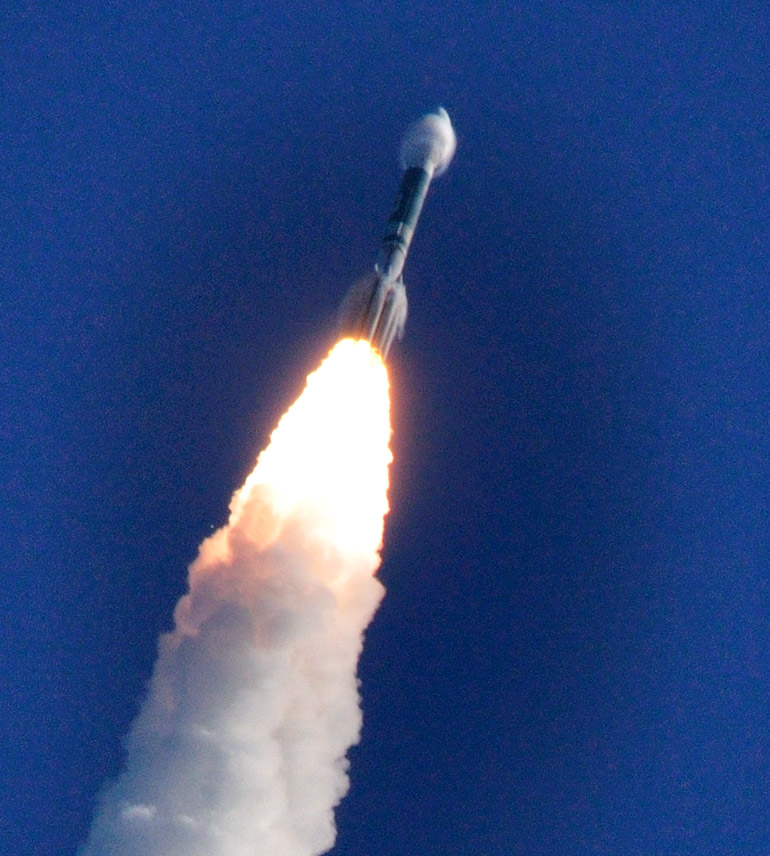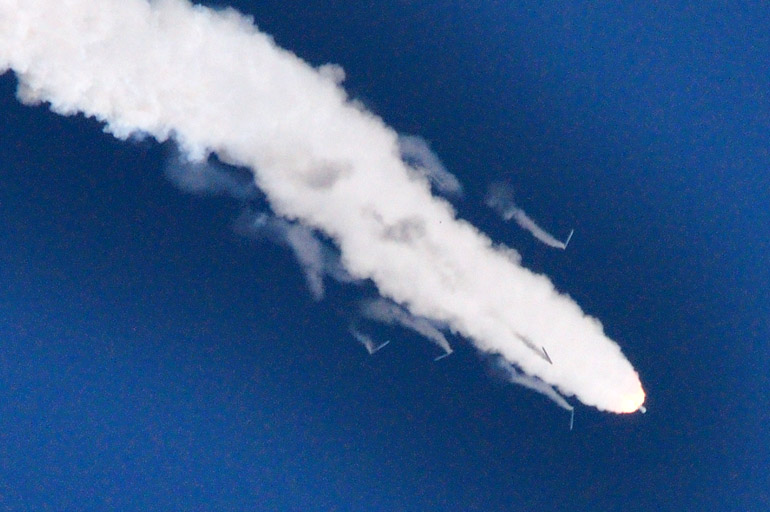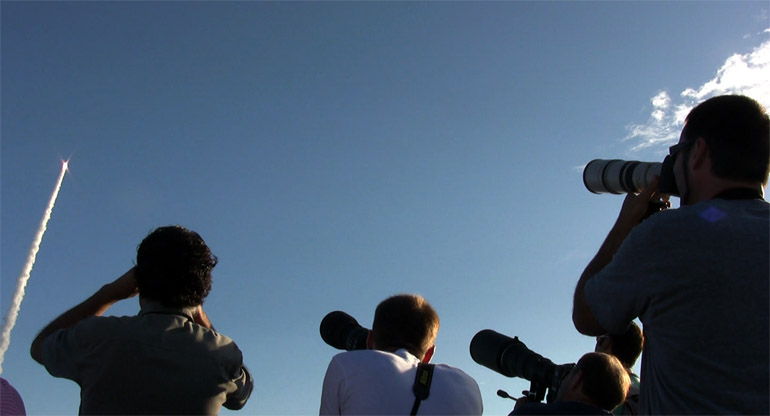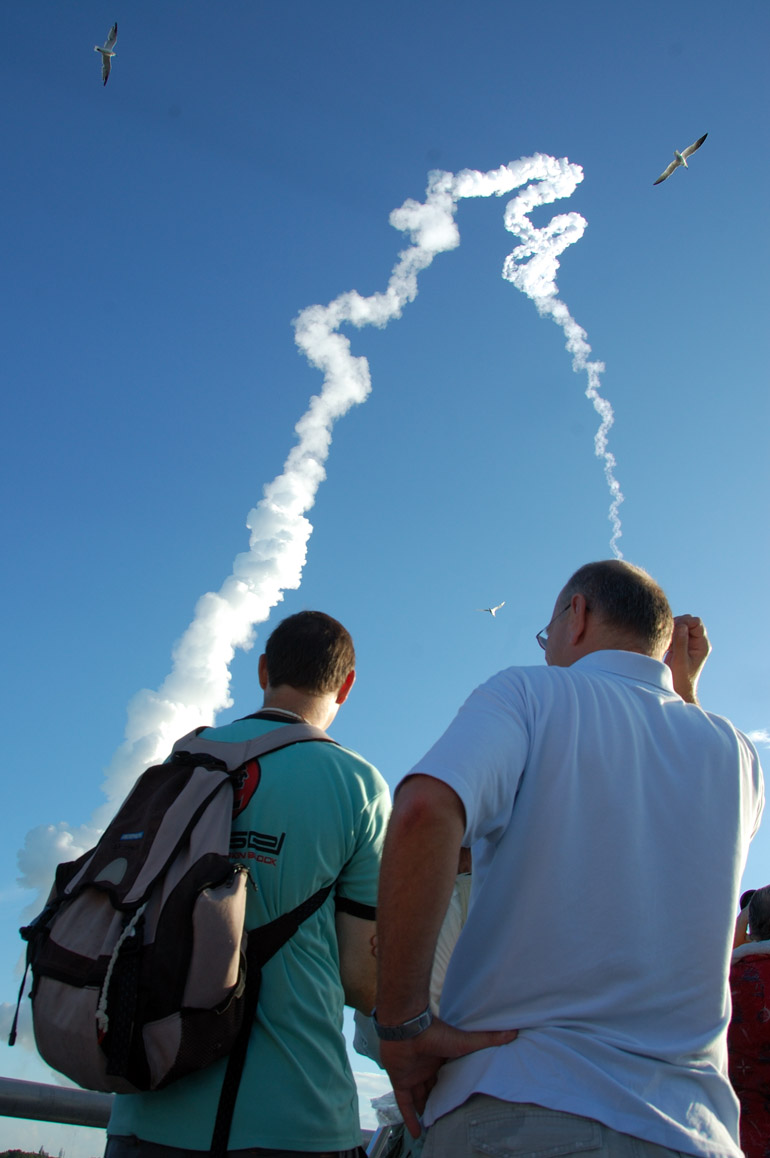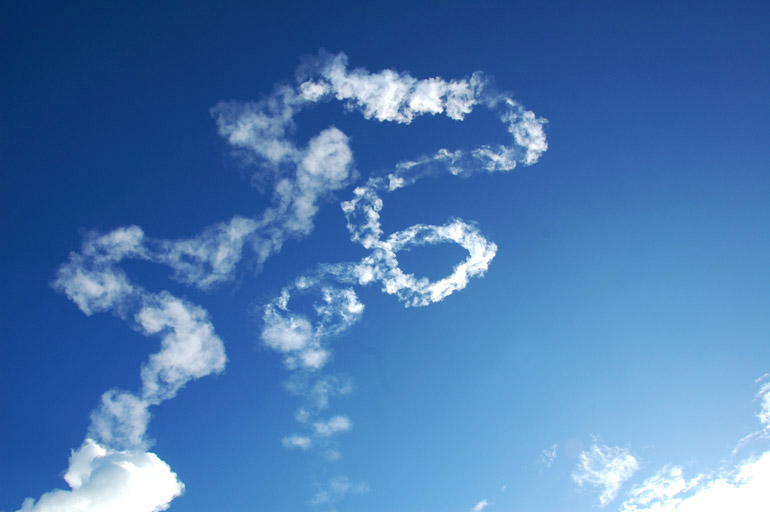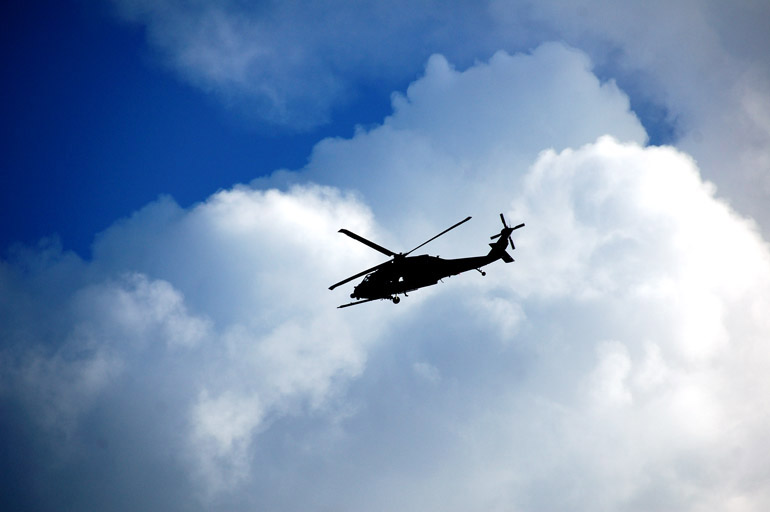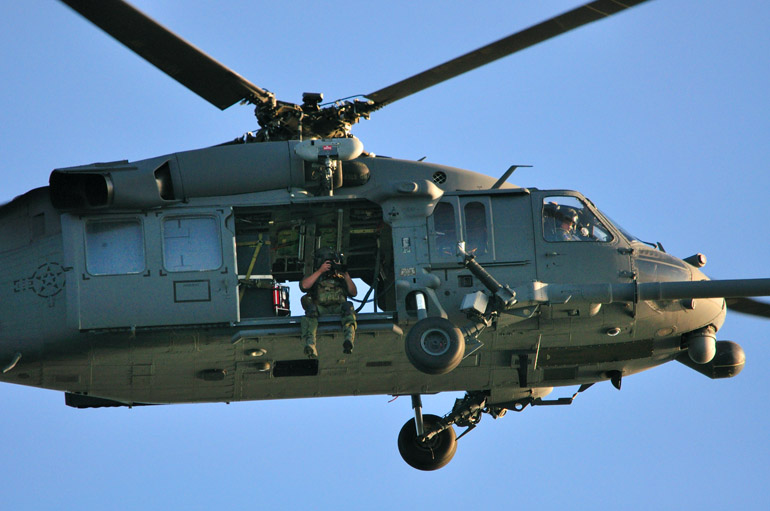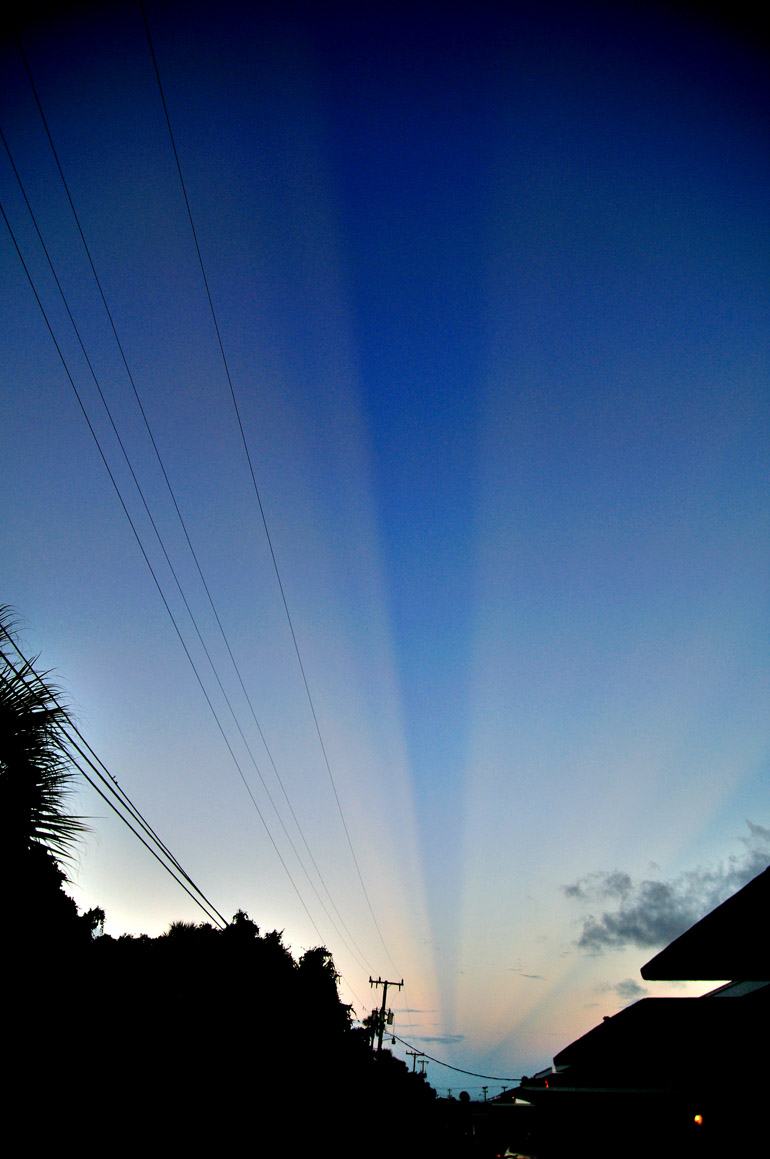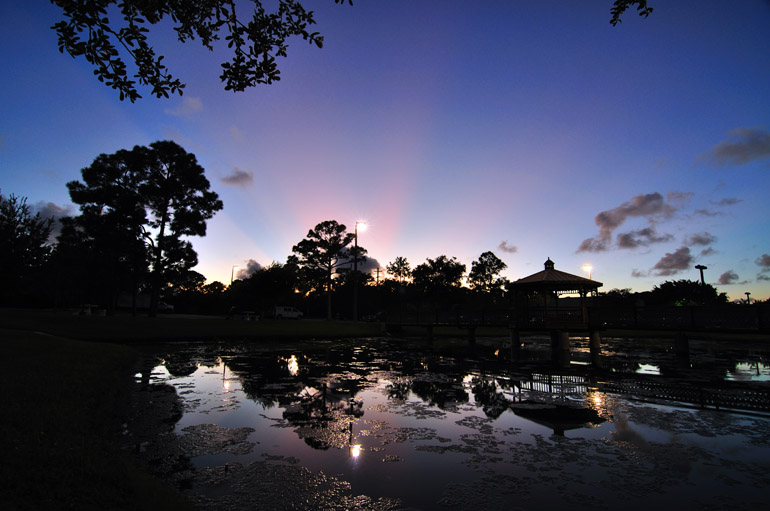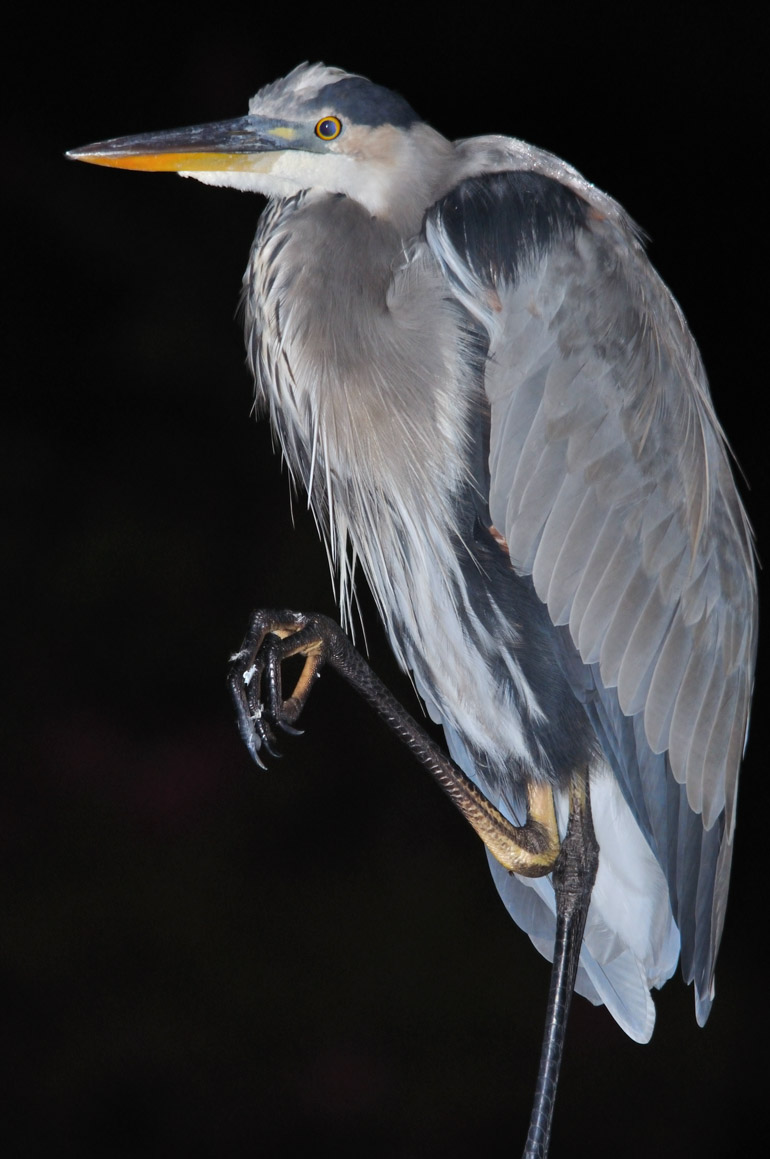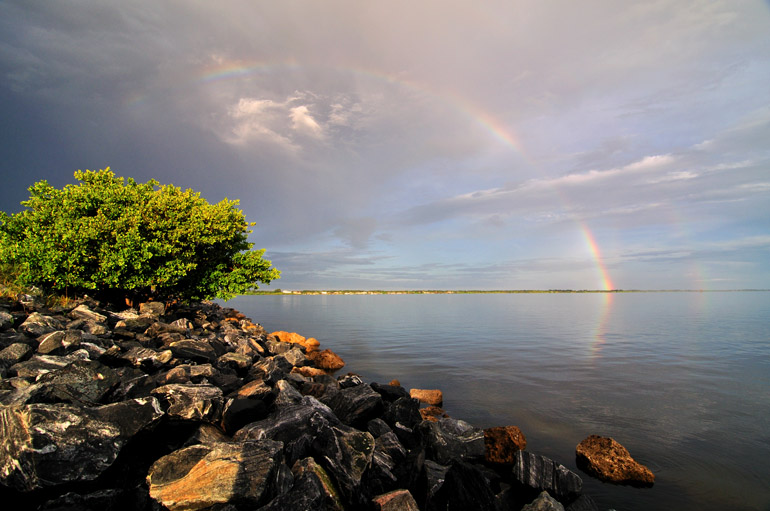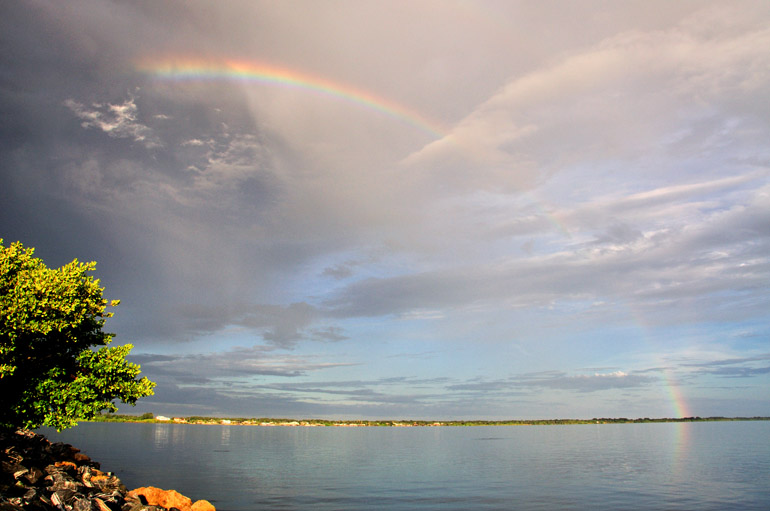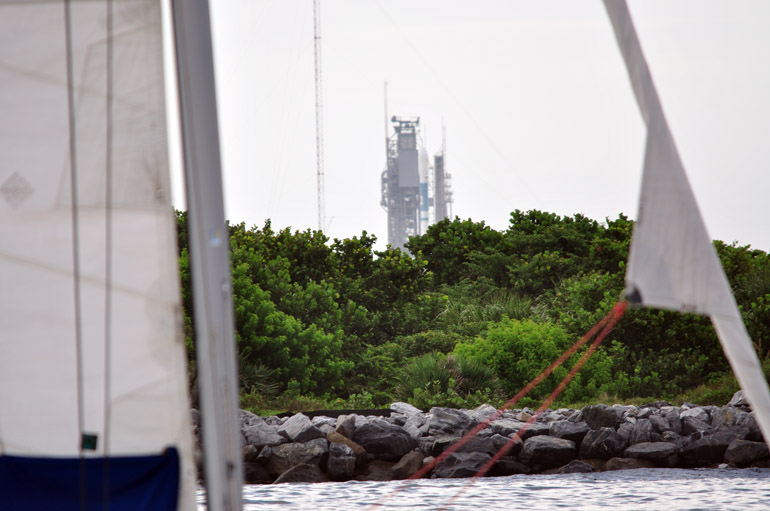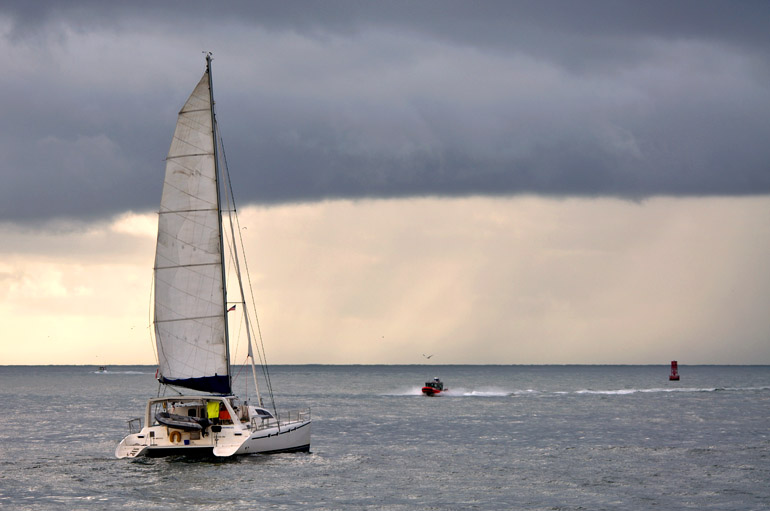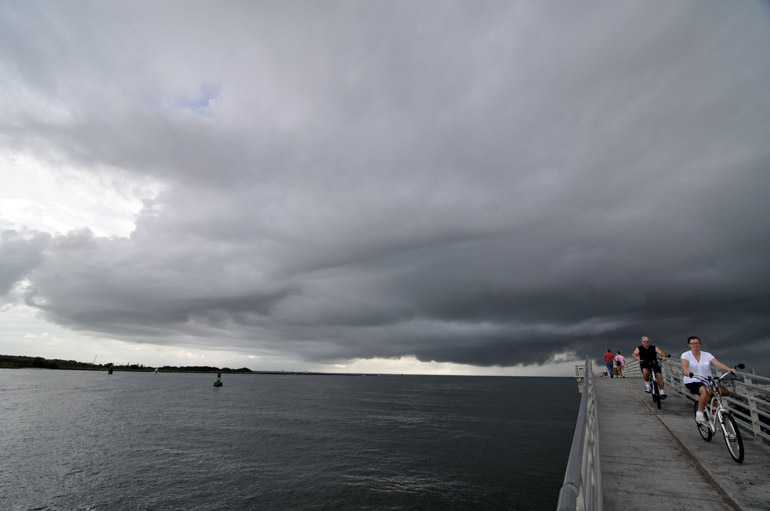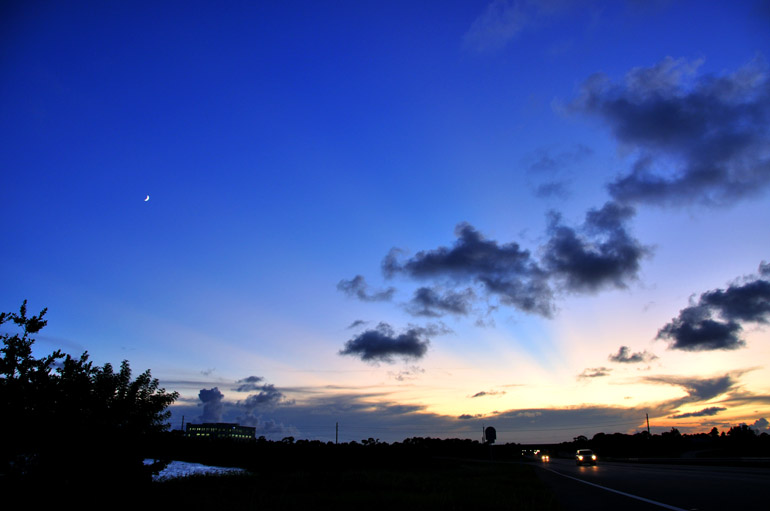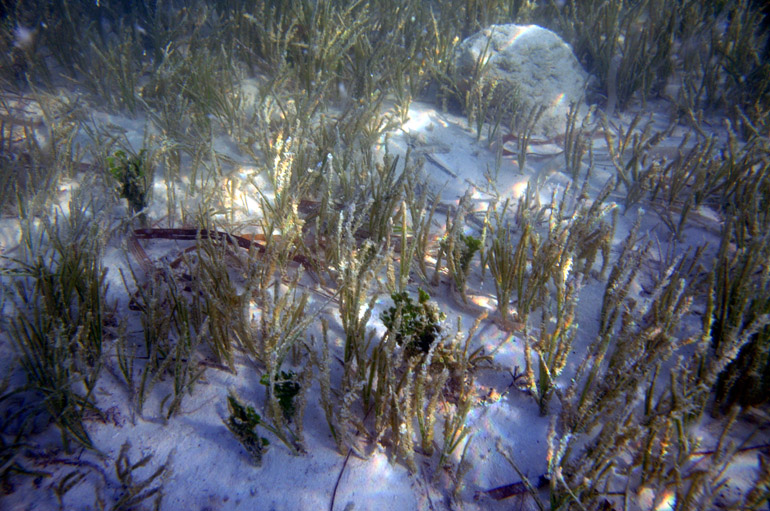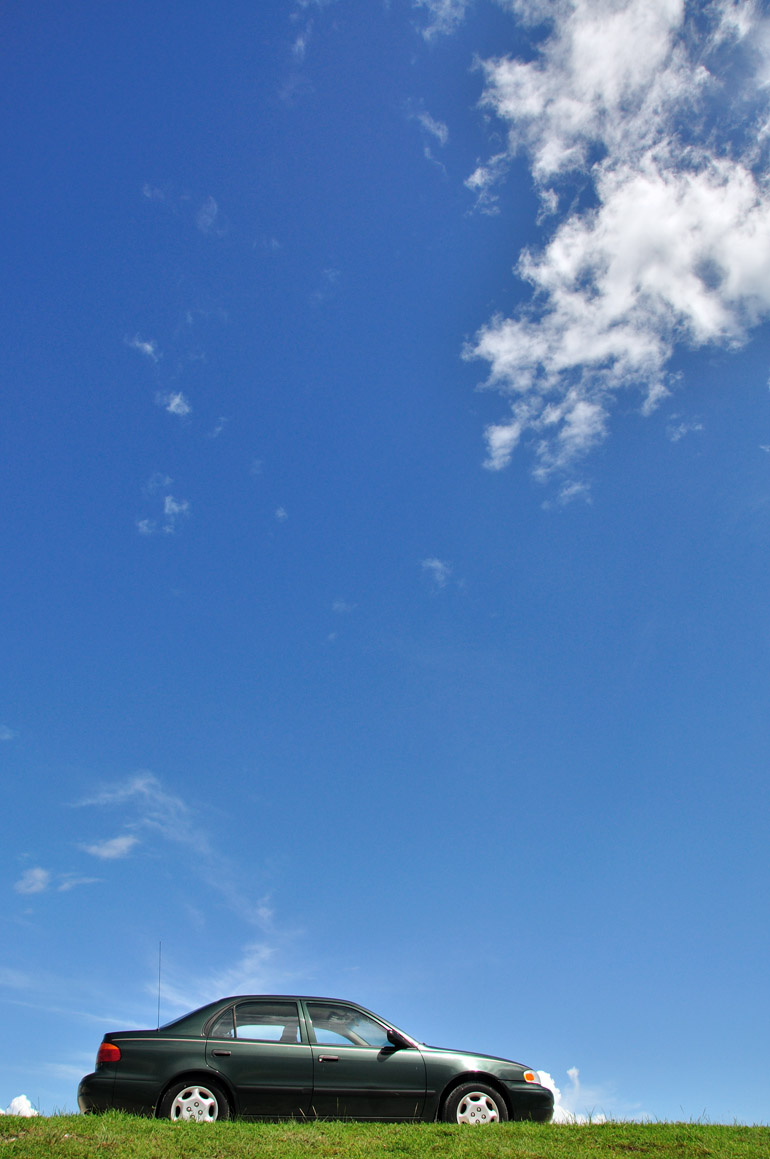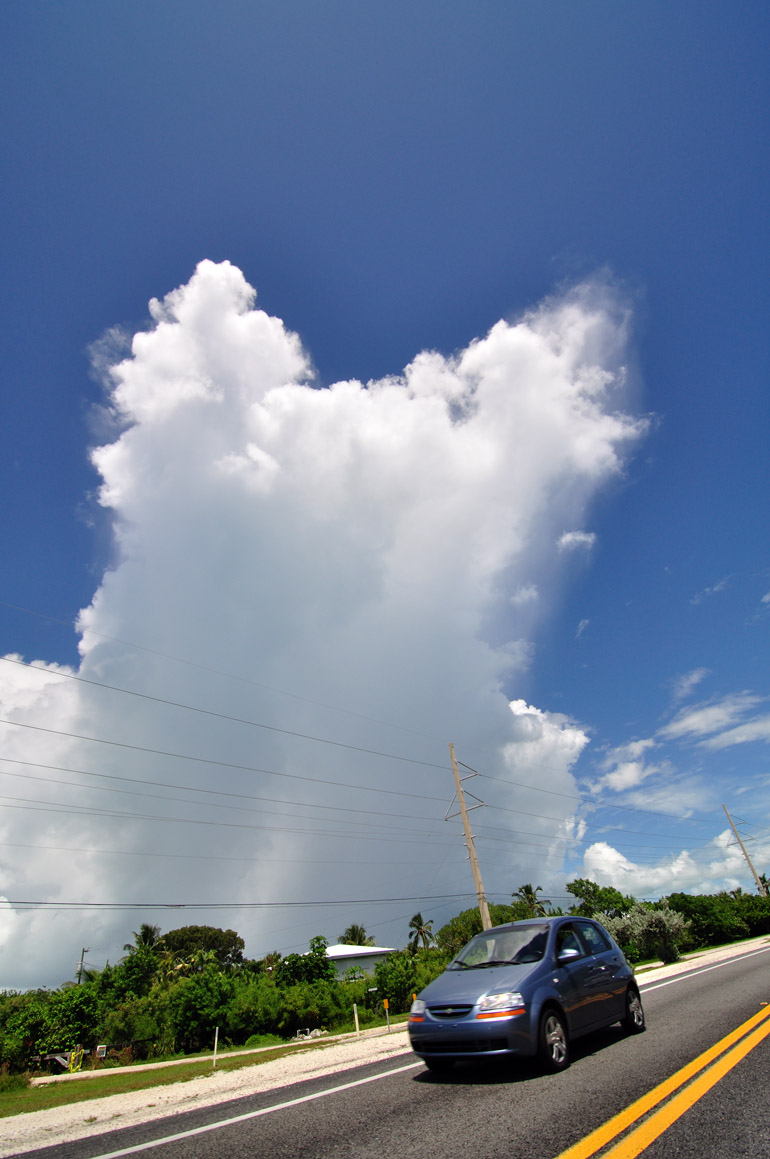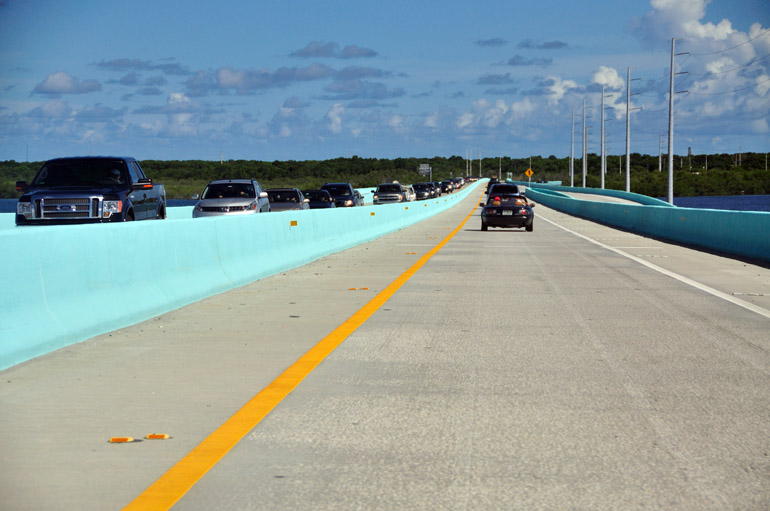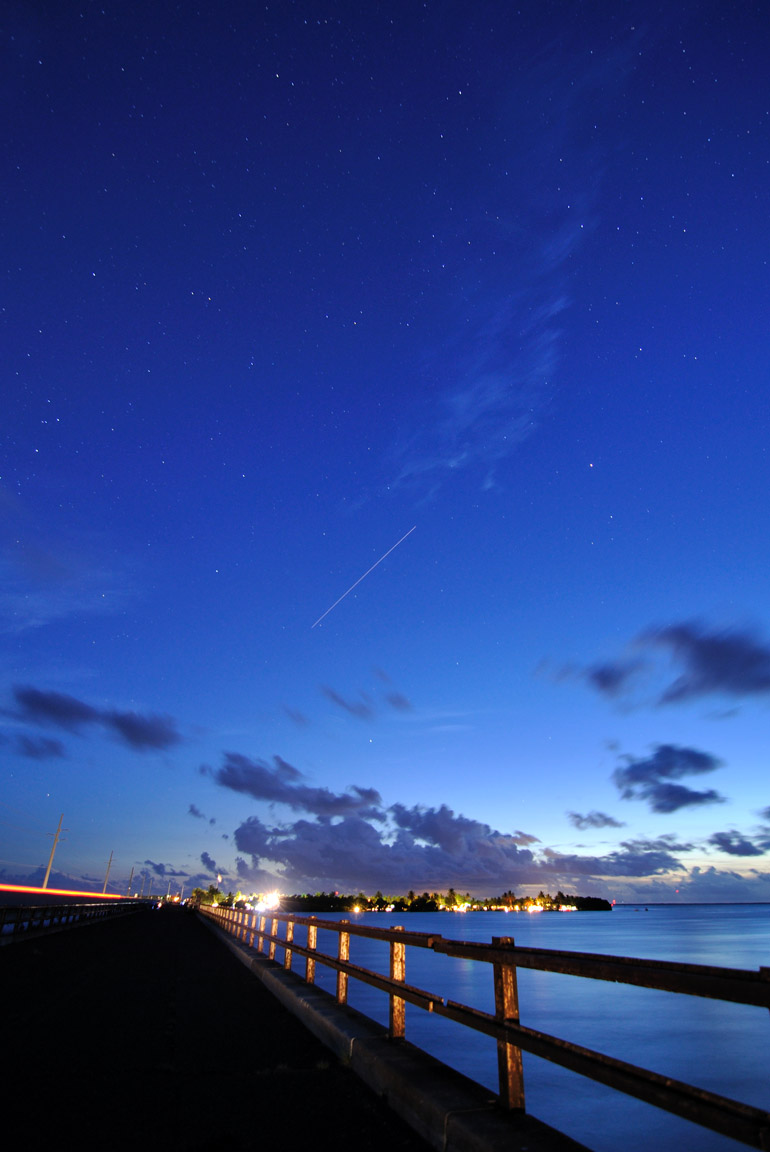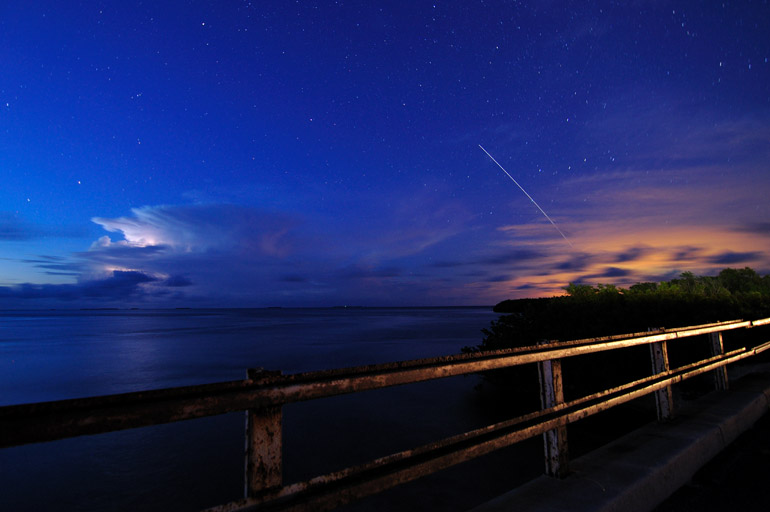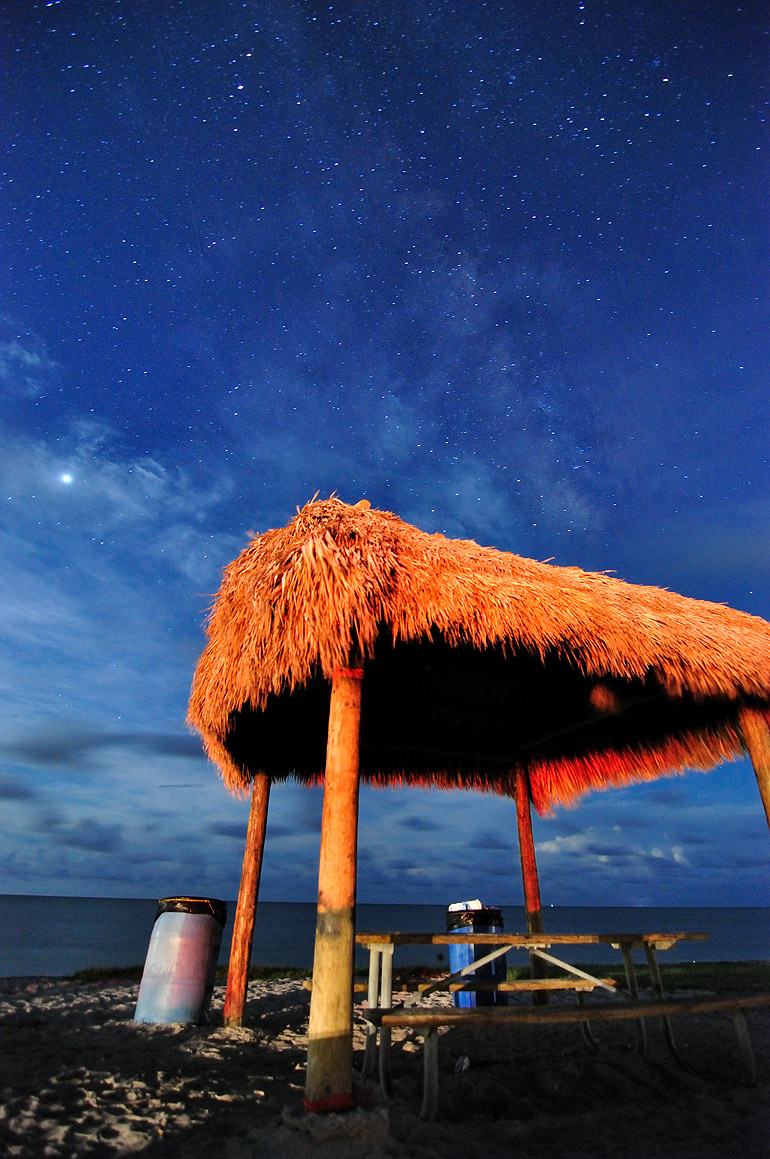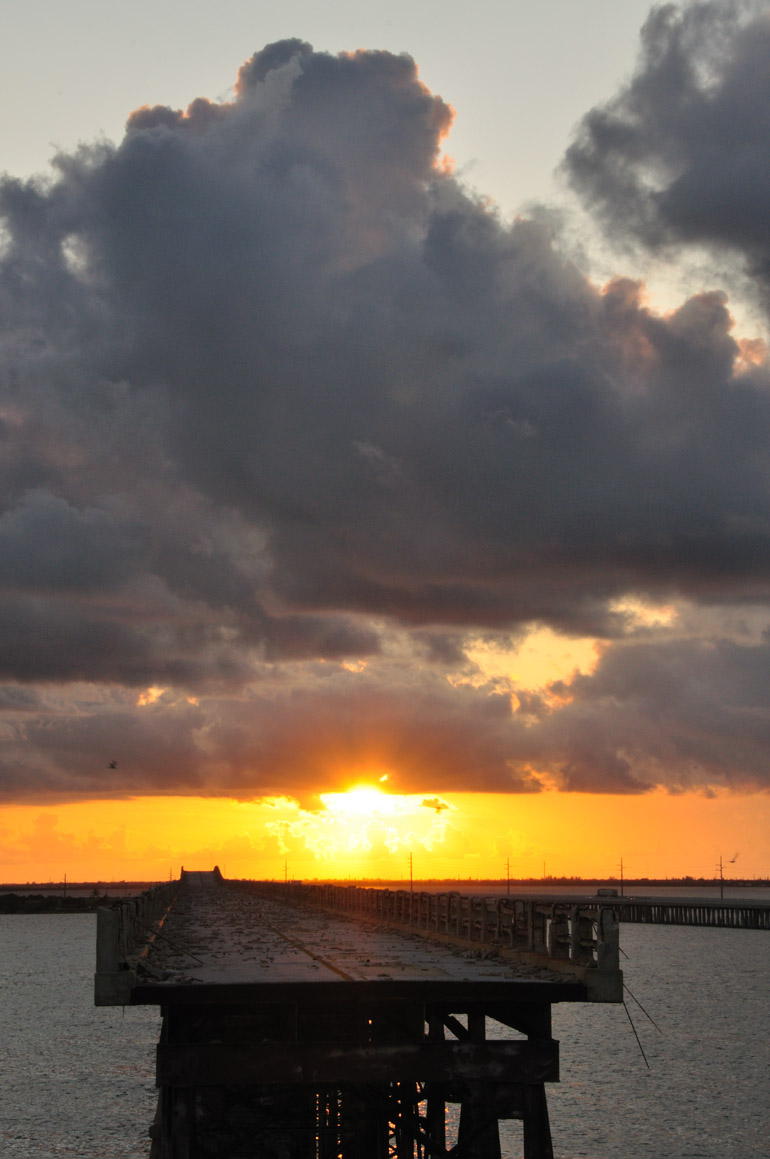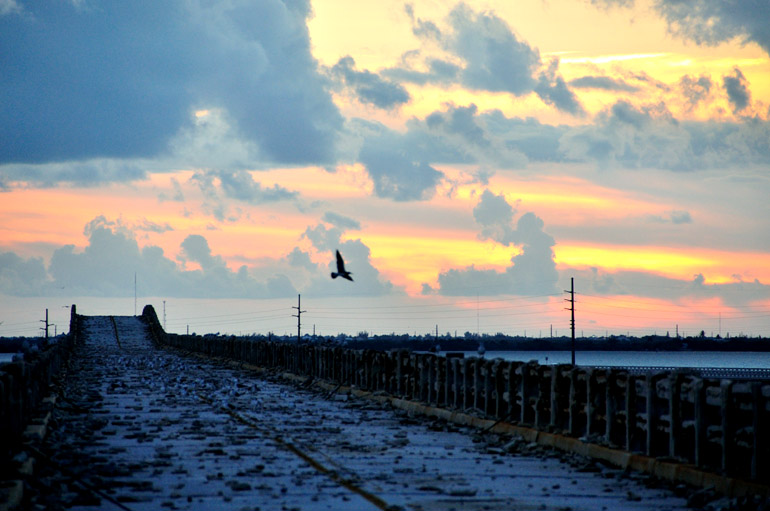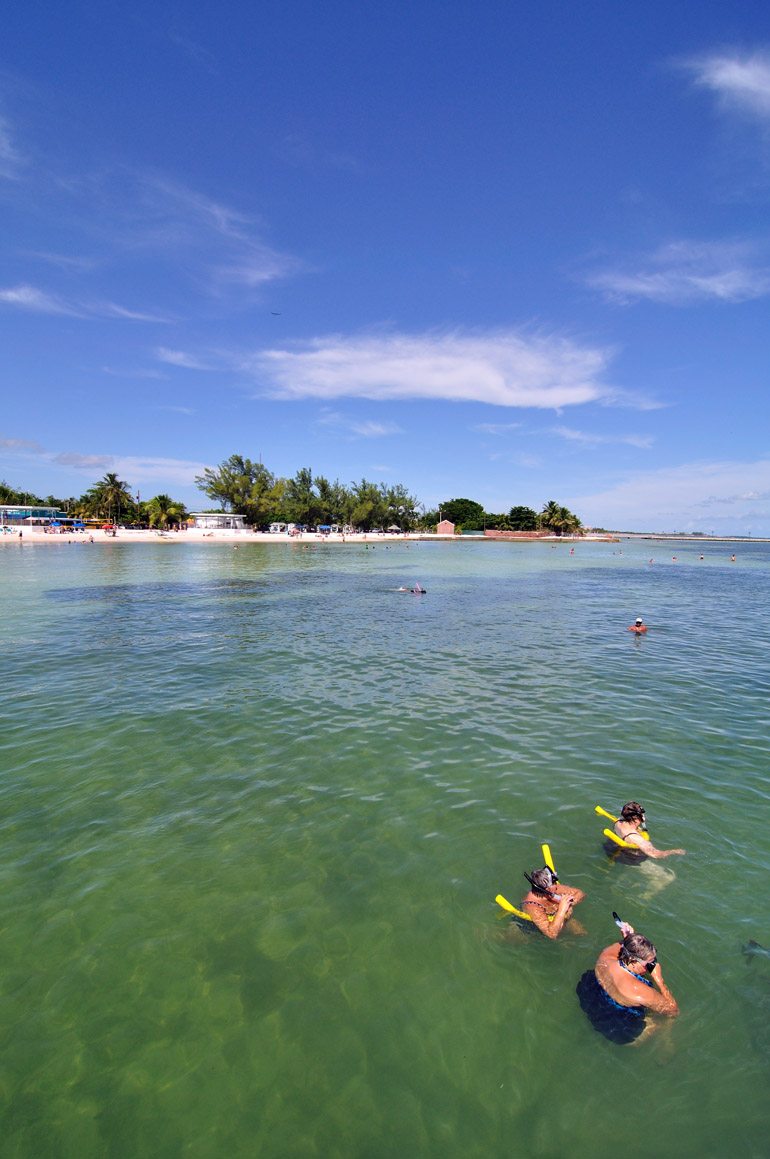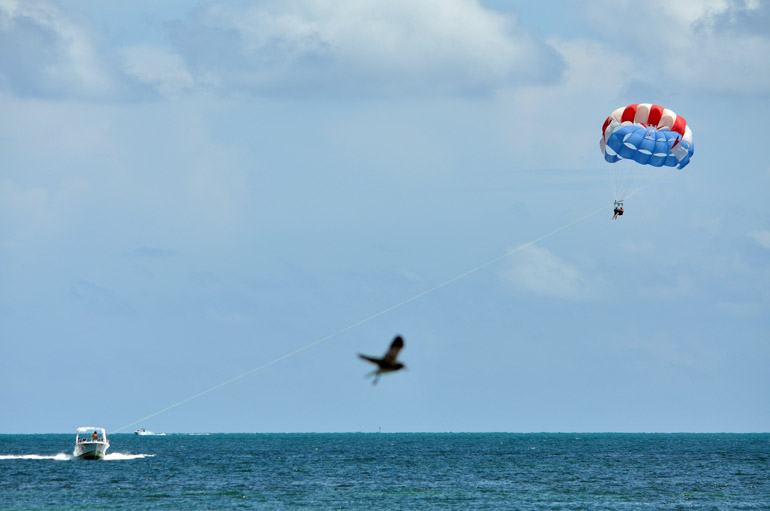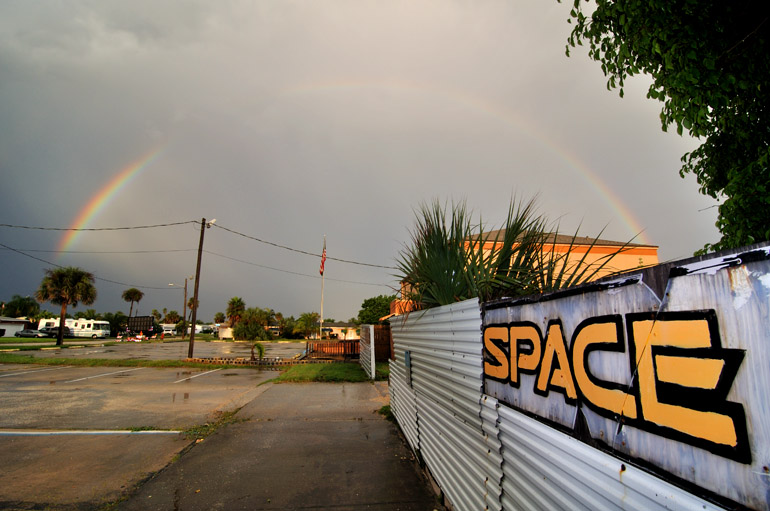
I first stopped in the empty parking lot of Space Age Books in Satellite Beach, where I used the sign in the foreground to add an element from the whole purpose of getting up early. The rainbow was just extra - but welcome, of course.
There isn't much that stops me from watching a rocket launch, and today's 8 a.m. scheduled liftoff time of a Delta II from Cape Canaveral was of no deterrence. I'm used to waking up around noon each day, but seeing a Delta II from only a few miles off in Port Canaveral was motivation enough for me to roll out of bed at 6 a.m.
The launch pads for Delta IIs are the southernmost at Cape Canaveral Air Force Station, affording the general public at Jetty Park in Port Canaveral a breathtaking sight and thunderous noise. This, in my opinion, beats even manned launches unless you're a member of the space press or one of the few residents fortunate enough to get tickets at Kennedy Space Center for a shuttle launch.
When I arose Wednesday morning, though, I heard thunder. I looked out, and it was pouring. I briefly attempted to photograph the lightning, but that was fruitless. The launch, according to its managers at United Launch Alliance and NASA, was still on because the weather was expected to clear. They pushed the time back to 8:59 a.m, though, the last possible window for the rocket to be launched today into its proper orbit. Uncharacteristically, I shaved, showed and left home all before noon - heck, it was before 7.
During the 35-minute commute, the rainfall was steady, but the sun started to break through the clouds. Still, with large clouds lingering, I knew the rocket had a very slim chance of getting off the ground Wednesday.
After stopping at a 7-Eleven just south of Patrick Air Force Base, I walked out of the convenience store and nearly dropped my can of Red Bull. A rainbow arced over the 7-Eleven. Reminding myself of the unlikelihood of a rocket launch at Cape Canaveral, I decided to shoot the rainbow so I wouldn't come up empy in the event of a scrub. I took a few shots from a parking lot near the 7-Eleven, then backtracked over Pineda Causeway for some images of the full bow over the Banana River and ended with a couple of photos from the edge of the river in Cocoa Beach.
The morning's photography ended predictably, though: Five minutes after paying for a parking pass at Jetty Park in Port Canaveral, the launch was scrubbed. We'll do this again tomorrow morning. Looks like another trip to 7-Eleven for a Red Bull is in my future.

With the sun low on the horizon over the Atlantic Ocean behind me, the shadows were long. This is another of my self-portraits, with the rainbow arcing over Pineda Causeway and the Banana River.
The left side of the rainbow faded, but the right still was shining brightly. The secondary bow was faint.
In the first few photos, the apex of the bow is rather difficult to perceive. Here, though, the top is resilient, but the left extreme had almost entirely dissolved at this point.
A close-up of the apex of this natural parabola.
When I entered southern Cocoa Beach a few minutes to the north, the left side of the rainbow, which had faded earlier, came back. Again, I ignored "no trespassing" signs for the sake of a few photos, here with a boathouse on the Banana River as the foreground.
Not a well-composed shot, but I liked the bands of clouds and light leading downward at an angle from the rainbow.
With the Delta II rocket still sitting on launch pad 17B, a sailboat made its way out to sea from Port Canaveral. By this point, the launch already had been scrubbed, and most of the people at Jetty Park had left. I stuck around to see if anything would happen.
Though the sky directly above the launch pad seemed blue and bright, these showers were moving quickly onshore. The large anvil cloud associated with this precipitation was too much of a concern for launch managers.
I shot this just before leaving the pier at Jetty Park and just before it started to rain. The launch pad is on the piece of land to the left.
